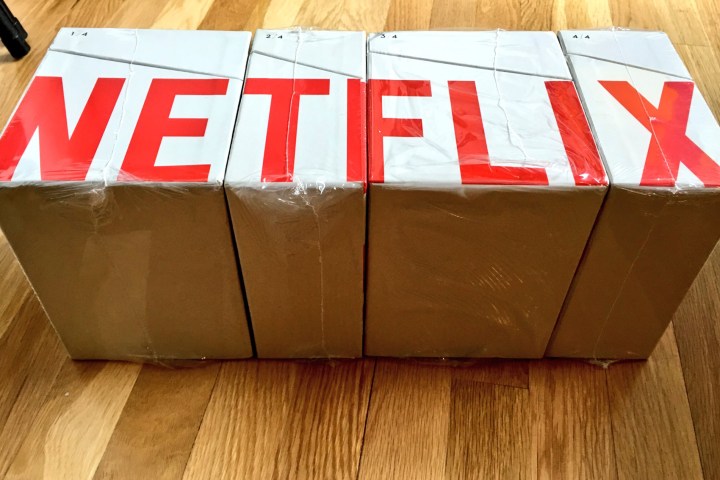
In a 10-page filing submitted to the FCC on September 6, Netflix is asking the Commission to determine if American households have enough broadband access to consume television on the internet. The filing claims that data caps imposed by broadband providers can impede the use and availability of “advanced” communications capabilities. The streaming company also claims that discriminatory application of data caps are “an impediment to advanced telecommunications capability.”
“Data caps on fixed-line networks do not appear to serve a legitimate purpose: they are an ineffective network management tool,” Netflix argues. “Fixed-line Broadband Internet Access Service (BIAS) providers have stated that data caps on fixed-line networks do not serve a traffic management function. They have been described alternatively as a way to align consumers’ use of the network with what they pay. As a method of price discrimination however, data caps and usage based pricing (UBP) are redundant to the speed tiers that consumers are used to.”
According to Netflix, a single consumer needs at least 300GB per month to meet the needs of internet-based television consumption. That doesn’t include everything else consumers access online each month. Netflix argues that the data allotment for streaming TV gets even bigger when multiple consumers are streaming TV shows and movies in a single household, and when consumers begin streaming 4K content. That latter detail is probably the company’s biggest beef with data caps: the inability for restricted customers to stream 4K content from Netflix.
The company goes on to attack mobile internet providers as well, asserting they charge an arm and a leg for low amounts of data each month. Customers are far less likely to stream Netflix outside of broadband given those low data caps. Netflix thus points approvingly to T-Mobile, which doesn’t charge customers for video streaming, and contends that other mobile ISPs should do that same.
“Because of a low data cap, an online service may need to pay an ISP to zero-rate its traffic to enable that ISP’s customers to access the online service,” Netflix states. “Such arrangements create an incentive for ISPs to maintain artificially low caps. The Commission should clarify that discriminatory application of data caps skews consumer choices and works against consumer -driven incentives to deploy advanced telecommunications capability.”
Netflix also wants the FCC to adopt a 10Mbps download speed benchmark for the mobile internet to reassure consumers that they can stream Internet television on their smartphones and tablets through a wireless broadband provider. Again, that would require data limits to be eradicated, or the provision of streaming-free plans similar to what T-Mobile offers its customers.
“Today, consumers are less likely to use their mobile broadband connection to stream video on multiple devices at once, but as consumers increasingly expect mobile to substitute for fixed-line connections, the Commission’s criteria in this proceeding should track this evolution,” the company argues. “Additional bandwidth will be necessary to support simultaneous streaming and 4K capability when wireless-fixed line substitutability become a reality.”
The FCC’s reaction to Netflix’s plea will definitely be an interesting one to evaluate. Stay tuned.


